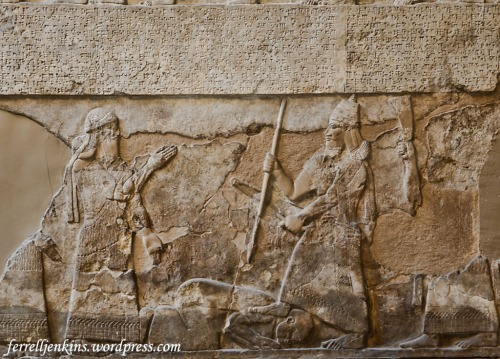From the time of my earliest tours I noticed that the tour members were surprised to see various goods carried on the head. In the Middle East it is common to see women carrying buckets of water on their head without even steadying them by hand. In the Middle East and Europe bread is transported on carts, and sometimes on the head, without any covering.
The photo below was made in the Muristan of the Old City of Jerusalem. These loaves of bread and other bakery goods may be headed to restaurants where they will be turned into sandwiches for hungry patrons.

Man carrying bread on his head in the Muristan area of the Old City of Jerusalem. Photo by Ferrell Jenkins.
Bread is an important staple in the diet of many people. And the bread we are speaking of here is not like that “old lite bread” as my late mother in law used to call modern prepackaged loaves of bread. She made the bread for her family in her own kitchen. On my earliest tours in the late 60s and 70s of the last century the bread served was hard and sometimes it was baked in such a ways as to have a hollow center.
The ancient Israelites were dependent on crops of grain for their bread. Wheat and barley were major crops in the Promised Land.
… a land of wheat and barley, of vines and fig trees and pomegranates, a land of olive trees and honey, a land in which you will eat bread without scarcity, in which you will lack nothing, a land whose stones are iron, and out of whose hills you can dig copper. (Deuteronomy 8:8-9 ESV)
When the prophet Jeremiah was in prison he thinks that he may die. He requested that he not be sent back to the house of Jonathan the secretary lest he die there. King Zedekiah ordered that Jeremiah be committed to the court of the guard and that bread be delivered to him daily from the baker’s street until there was no longer bread in the city.
So King Zedekiah gave orders, and they committed Jeremiah to the court of the guard. And a loaf of bread was given him daily from the bakers’ street, until all the bread of the city was gone. So Jeremiah remained in the court of the guard. (Jeremiah 37:21 ESV)
I am old enough to remember the rationing of World War II. Farmers were in a little better position to have stores of corn from which our bread was made in those days.
During the Wilderness Wandering the Israelites were provided with manna which the Psalmist called the bread of angels.
Man ate of the bread of the angels; he sent them food in abundance. (Psalm 78:25 ESV)
The words of Jesus have added significance to those born into humble circumstances.
I am the bread of life. (John 6:48 ESV)
Give us this day our daily bread (Matthew 6:11 ESV)
We must remember that we are sustained both physically and spiritually by the bread that the Lord provides.







You must be logged in to post a comment.